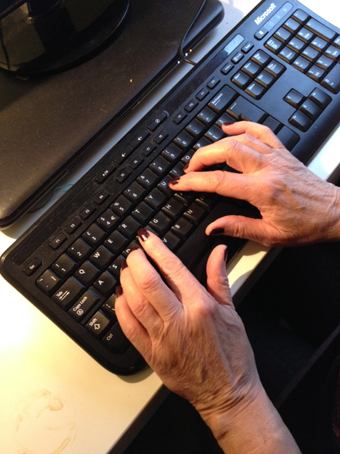We are just coming to that time of the year when schools are planning holiday activities and their after school clubs for the Autumn term.
Now of course you want activities that are a bit more exciting than school curriculum subjects. Some schools opt for trips out, unusual sports, learning an instrument or a gardening club and I have been intrigued by stories of children learning the Glockenspiel, engaging in cheerleading and joining a Conundrum Club.
 Often schools look for clubs as an antidote to technology promoting outdoor pursuits and a break from screen time. All good arguments but there is still a place for learning touch typing.
Often schools look for clubs as an antidote to technology promoting outdoor pursuits and a break from screen time. All good arguments but there is still a place for learning touch typing.
In the UK we don’t teach it in schools as part of the curriculum and yet it is an important skill for life – as important as learning to cook. Often the pundits claim that
digital natives need no instruction on basic computer skills, including keyboarding but this is not true. These students are using more digital media to make notes, do their homework and even take standardised tests so it is vital that they learn to use it efficiently.
There are different ways to teach touch typing but schools often choose learning online where the most popular programs are:
Touch-type Read and Spell https://www.readandspell.com/ an online-access typing course – Winner of the Education Resources Award – 2017, with 24 levels, each with 31 modules
Kaz https://kaz-type.com/ – shortlisted for the Bett Special Needs Award 2019 – an Accelerated Learning course that teaches the A to Z keys in just 90 minutes – using a multisensory approach that engages both sides of the brain – has the added benefit of a qualification, a City and Guilds badge too
Englishtype https://www.englishtype.com/ uses vocabulary content from the national literacy strategy word lists and follows key stages 1-3 of the national curriculum
The Three Rs are not enough!
Here is Allen Tsui’s account of using KAZ type in different schools. You can read the full case study on the KAZ site
I first encountered KAZ-Type in 2014 when working at a highly rated Independent
Preparatory School based in central London. The Head Teacher asked me to manage the school’s subscription as part of its computing curriculum.
 The children I was working with at the time were very enthused by it, especially being able to challenge each other with their typing speeds. Many were also partly motivated by the fact that I had set them a personal challenge to exceed my typing speed.
The children I was working with at the time were very enthused by it, especially being able to challenge each other with their typing speeds. Many were also partly motivated by the fact that I had set them a personal challenge to exceed my typing speed.
The school I currently work for – Willow Brook Primary School Academy in East London, is an amazing school, recognised by the Mayor of London as being one of the top performing schools in London in school year 2018/19
Beyond the school timetable, Willow Brook also offers a wide programme of after school clubs which are free to all families to take up. I was hosting or facilitating KAZ after school club held on Friday afternoons. This was so well attended and over-subscribed, we had to hold two groups.

 success in many areas in life. The working memory (which is part of the
success in many areas in life. The working memory (which is part of the